Early phase clinical studies possess and entail a rather crucial role in any form of developing new drugs, treatments, or therapies altogether. These are often performed on relatively small samples but are planned and conducted to evaluate the safety, dose range, and the basic efficacy of the intervention; therefore, patient involvement is a very important factor that can quite often be underestimated.
In this article, we shall discuss early-phase clinical studies and the various studies that fall under the category, the roles of patients, and how patient-oriented approaches are revolutionizing clinical studies.
Clinical studies of the initial form are the first stages of conducting research with two or more doses in a treatment or a new drug. These studies typically fall into one of three phases: The three phases are; Phase I, Phase II, and Phase III. Phase I studies only concern themselves with safety and dosage, Phase II studies compare efficacy to other existing treatments, and Phase III studies widen this to compare efficacy and track the late effects of a treatment.
The purpose of phases 0 and 1 of clinical studies is to evaluate the safety of a treatment as well as the dosage. These studies are generally carried out involving few number of normal healthy individuals or patient populations and are useful in drug development processes.
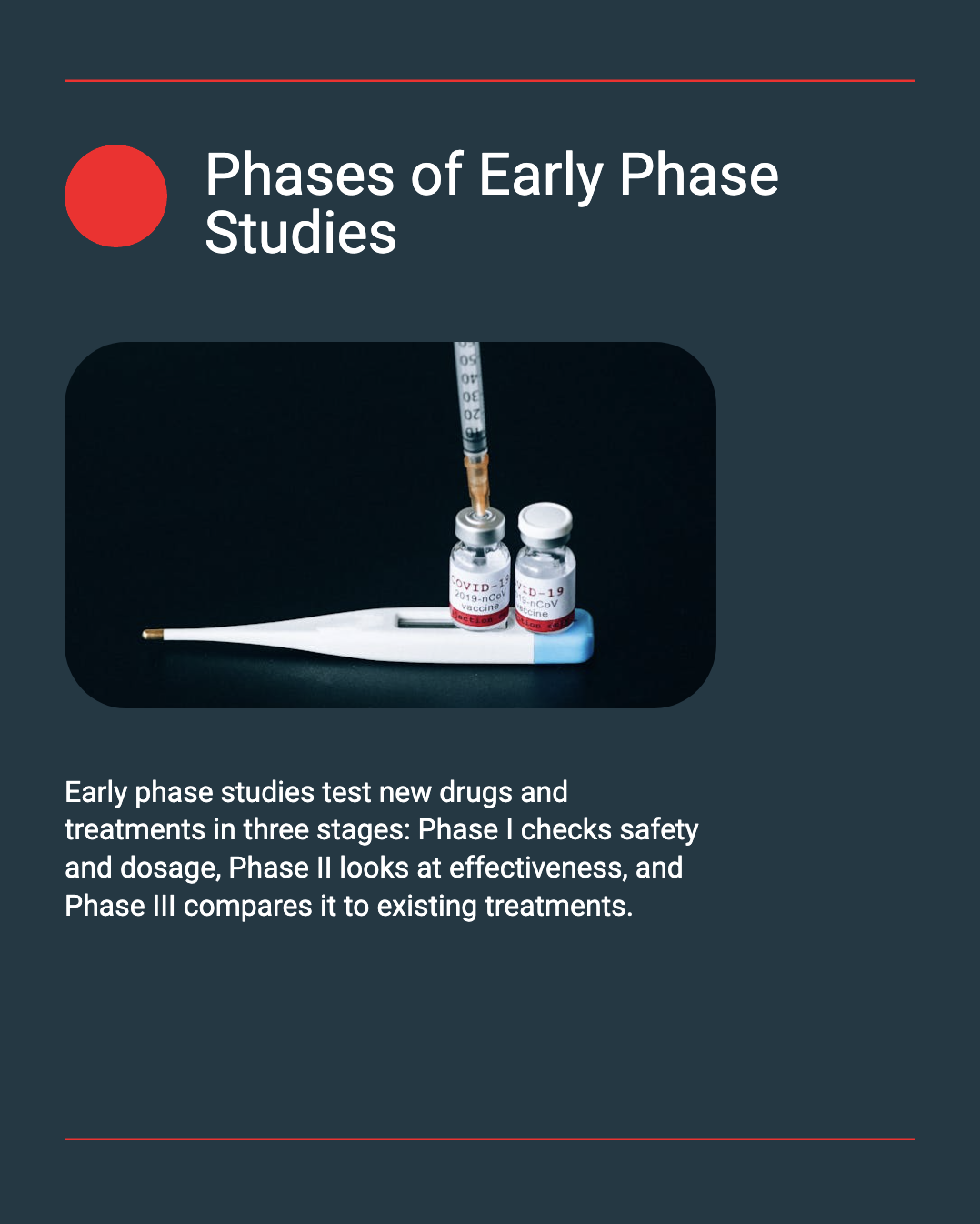
These are the first human studies of a new drug or therapy. Phase I studies primarily focus on evaluating the safety of the intervention and determining the appropriate dosage. Researchers monitor participants closely for any adverse effects. While Phase I studies often involve healthy volunteers, patients with specific conditions may be included if the treatment is intended for a particular disease.
Phase II studies are planned in order to determine the efficacy of the treatment. These normally involve more people as subjects than Phase I studies, and often involve a particular disease or illness. However, while administering the drug or therapy, Phase II studies look at how safe the drug or therapy is in treating the targeted condition.
While Phase III studies are not strictly referred to as part of the “early phase” they are conducted subsequent to favorable results from Phase I & II studies. Phase III studies are conducted with considerably more people and are used to assess the efficacy and the hazards of the intervention before it can be routinely used.
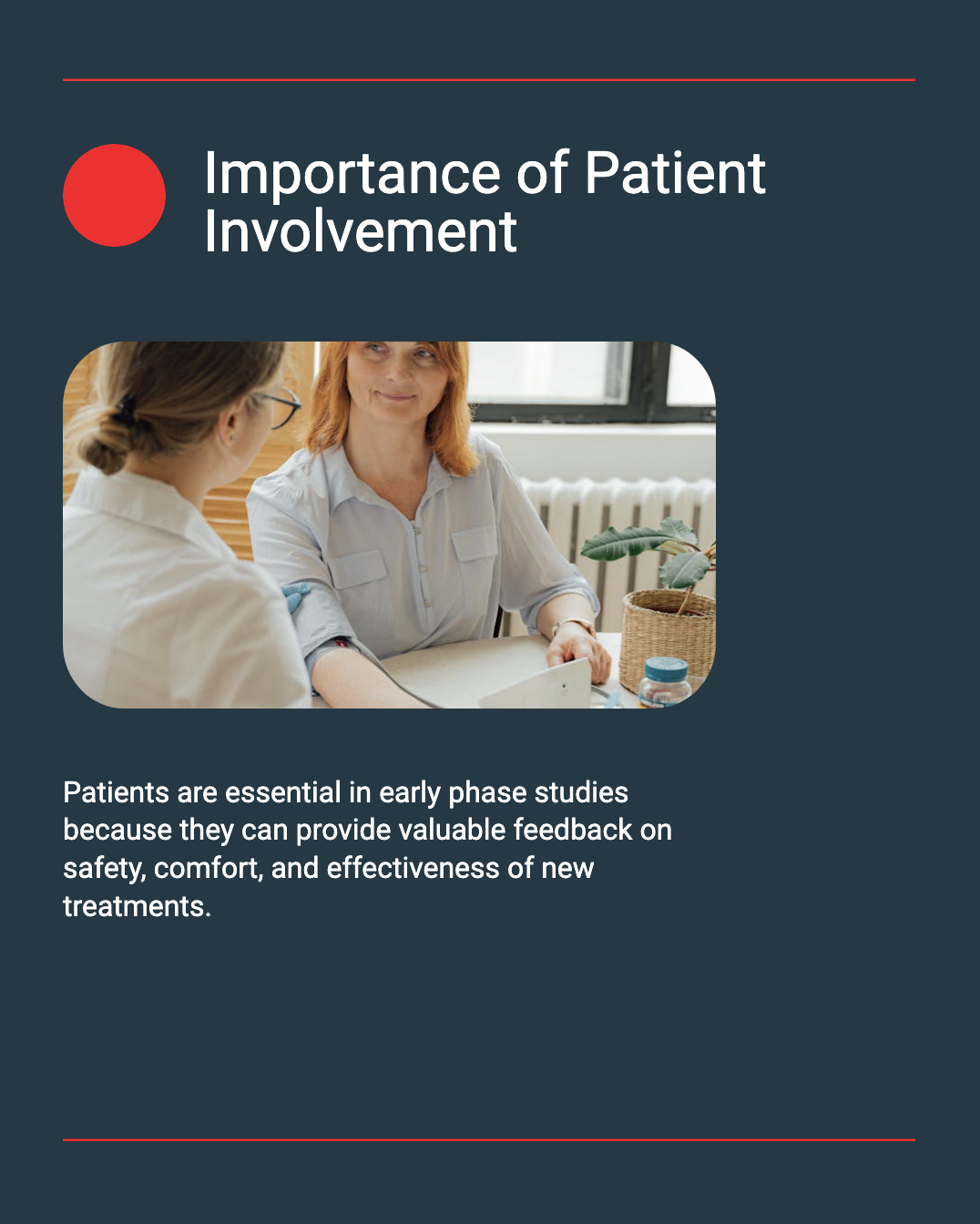
The role of the patient in the studies is gradually gaining appreciation across the globe. Traditionally, it was possible to say that some clinical studies were developed and carried out with minimal patient involvement. But with the increase in the recognition of further patient-oriented studies, attempts have been made to involve patients in phases I and II clinical studies.
Early-phase clinical studies often involve experimental treatments that may have unknown risks. Patient involvement is critical in ensuring that these risks are properly communicated and that the study procedures are designed with patient comfort and safety in mind. Patients' feedback on side effects, dosing regimens, and overall experience can help researchers make adjustments that enhance the safety and comfort of participants.
Depending on the patients’ contribution, it is possible to enhance the design of more clinical studies. Patient involvement in discussing their concurrent experiences, difficulties, and concerns help design the studies more realistically in relation to the condition being reviewed. In this way, the studies become more important and closer to the participants, hence registered and retained.
Patient involvement often leads to better data collection. This helps the doctors have a better understanding of the treatments given to patients since they can relate it to outside studies where patients are treated. Such data is of growing value in Phase 1 clinical studies and even more so as the emphasis is placed on patients’ experience in general.
In general, recruiting patients for the early-phase clinical studies may be difficult, particularly if the studies include experimental intervention. It was found that patients’ perceived inclusion resulted in higher study satisfaction and their engagement during studies. Patients can also get more involved in promoting the designated recruitment activities.
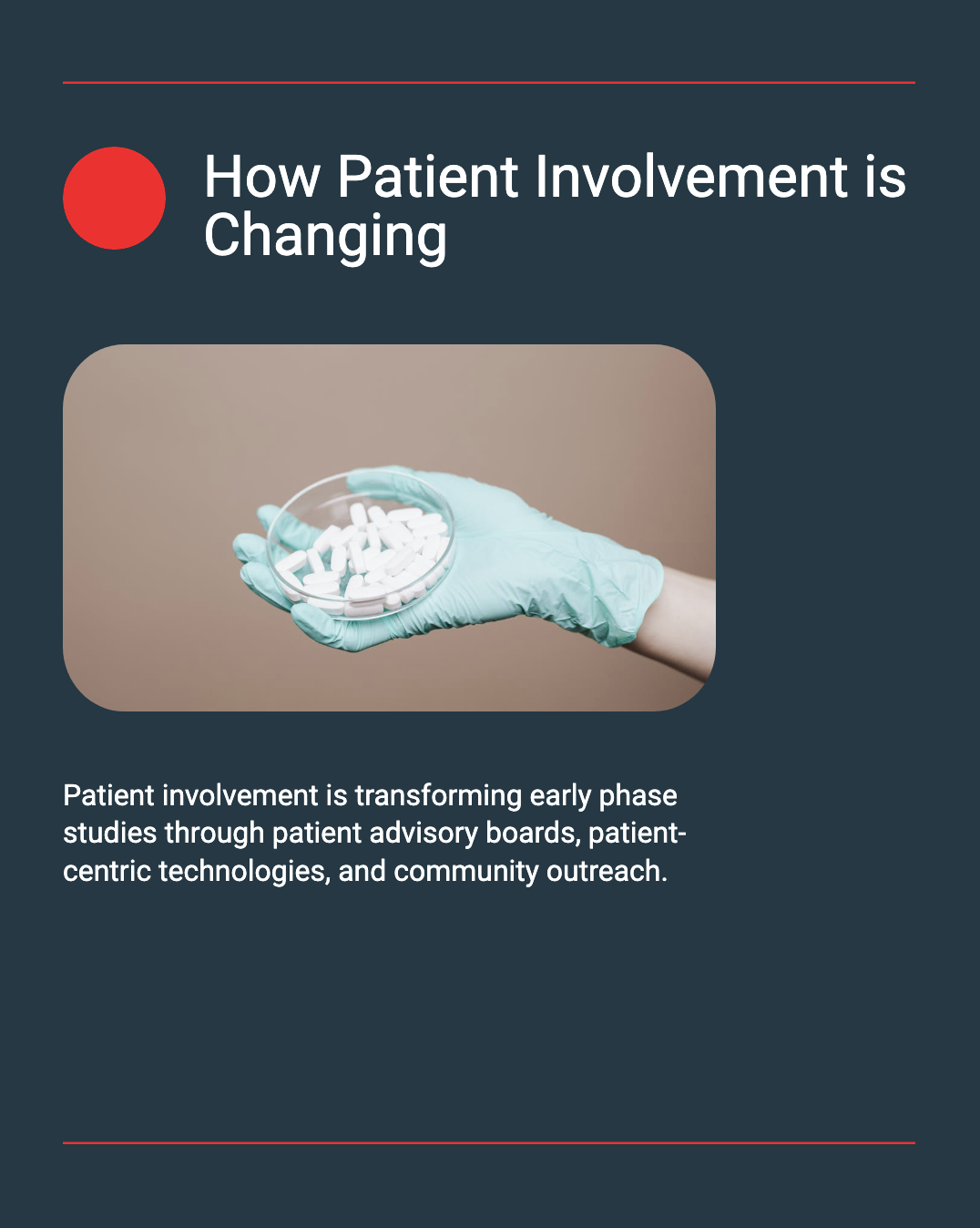
The awareness of the role of patient engagement has brought changes in both early-phase studies design and conduct. Here are some of the ways patient involvement is shaping the future of clinical research:
Today, patient advisory boards are integrated into the conduct of clinical studies by many research organizations. Recruitment allows these boards to be composed of patients who are familiar with the disease in question. Their work is to advise on issues arising from studies conducted, such as consent forms and other relevant documentation, proposed treatments, and methods of patient enrollment in the studies.
Technology has also brought about the possibility of increasing patient participation in clinical studies. Mobile apps, wearable devices, and telemedicine platforms give patients the opportunity to engage remotely in studies and report symptoms and outcomes. These also permit constant tracking that enhances the reliability and productivity of data gathering in Early Phase I clinical studies.
There is a growing practice of patient education and community engagement as most clinical study centres consider patients’ understanding of the studies essential. This is even more relevant when assessing ‘Phase 1’ studies, which are conducted on relatively new treatment methods, and patients may be reluctant to embrace them. Through the proper and informative, and easily understandable production of materials regarding the studies and the advantages and disadvantages of the studies, the patients can be encouraged to adhere to it, and more trust can be placed on the researchers.
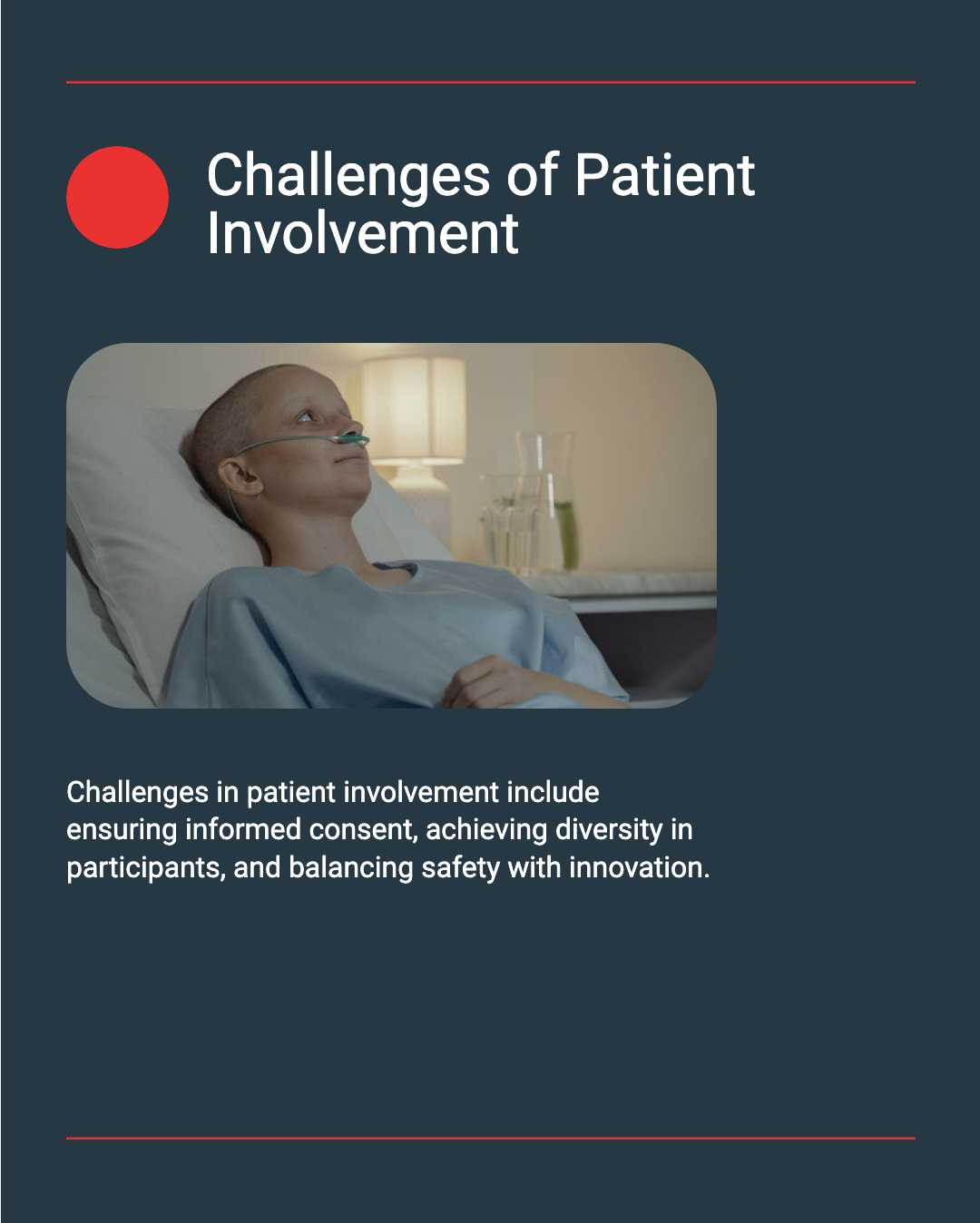
While patient involvement in early-phase clinical studies has many benefits, it also comes with challenges. Some of the most common challenges include:
Due to the fact that the treatment is relatively novel and because its side effects are also not very well known, the patient does not have adequate information that they can weigh against the benefits of receiving the treatment. It is therefore important, for example, to be assured that patients are well enough informed about the study and that the consent they give is free and voluntary.
This basically means that early-phase clinical studies have been criticised in the past for lacking diversification. Studies described in most of the research studies have in the past employed a sample with a relatively high degree of sample homogeneity, thus reducing external validity.
Since early phase clinical studies usually involve new treatments, it is critical to assess patient safety. Cautious as researchers are in keeping tabs for side effects amongst participants, the use of experimental treatments comes with potential dangers that are not fully understood. Balancing the risk of new discoveries in the field with safety concerns is a constant issue in clinical studies planning.
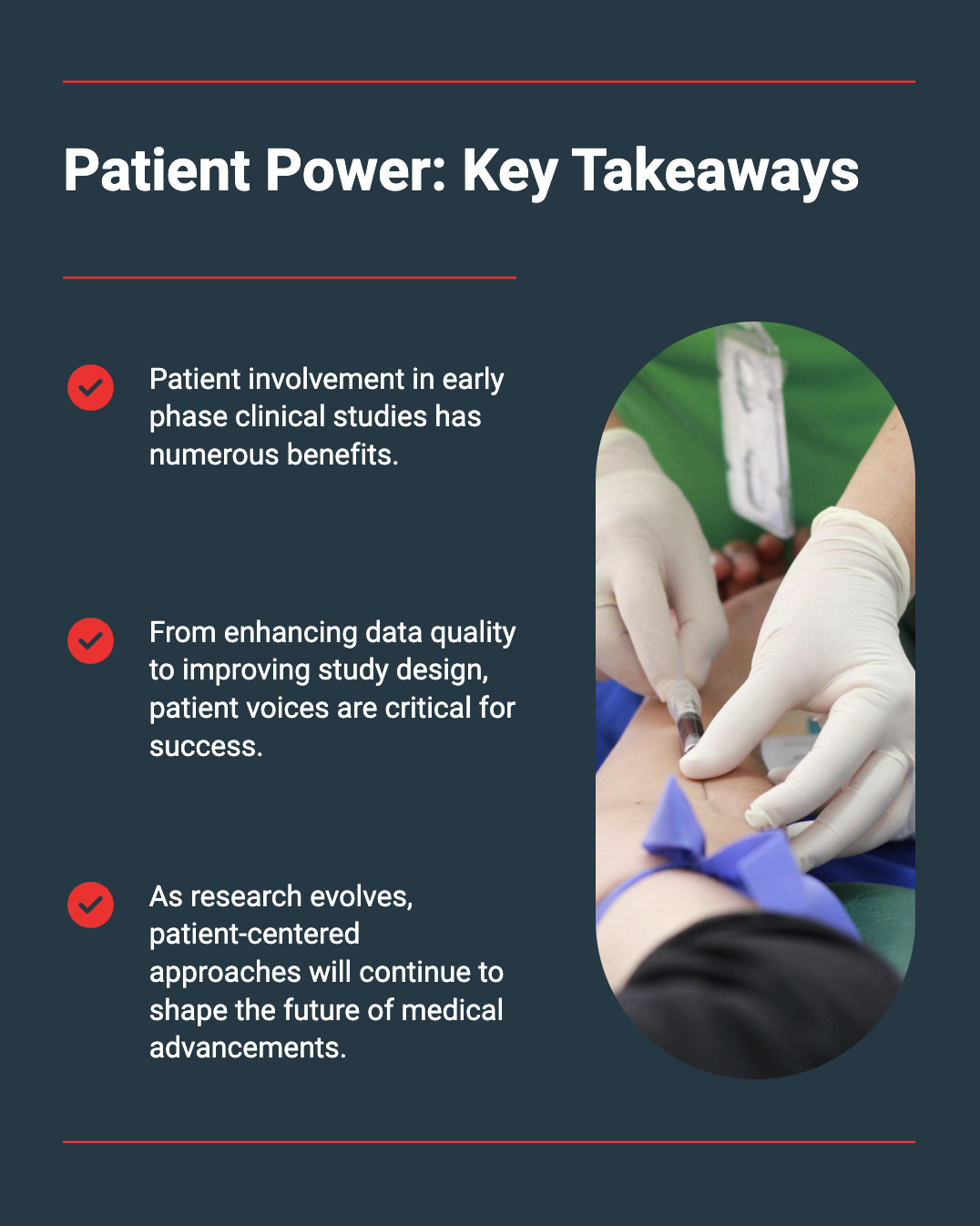
Clinical studies that are conducted in the early phase are an important part of the development of new treatments and therapies. Over the recent years, as clinical research took new twists and turns, patients have played an active role in clinical research. If patients are involved in the development, conduct & assessment of first-stage Phase I Clinical studies, the study's results will be better, patient safety will be better assured, and future treatments will better serve the patient population in question.
That means early phase clinical studies will continue to transform through leading patient-centered research, technology, and a focus on clinical studies' success, which in return will make clinical studies more efficient and successful in developing new medical treatments.
https://www.froedtert.com/research/early-phase-clinical-trials
 10.03.2025
10.03.2025